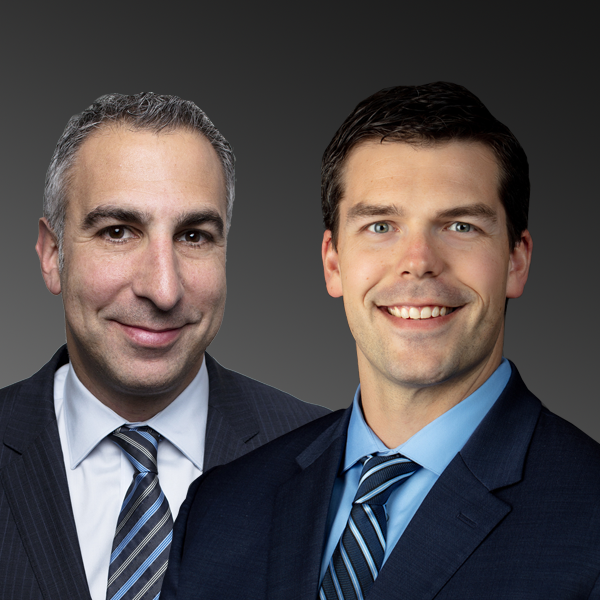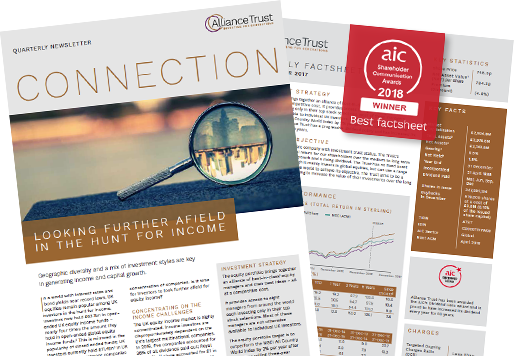In our Summer Newsletter we addressed the issue of why risk management is so important.
The beauty of the multi-manager approach which Willis Towers Watson oversees for the Trust is that one risk, that of a successful single fund manager de camping, is mitigated by having a team of fund managers with risk spread across specific managers and investment styles.
Here we dig a little deeper in to the ‘individual’ approaches of two of our equity portfolio managers, Metropolis Capital and Sands Capital, and how they consider risk and manage it within their sleeves of the Company’s portfolio.
Metropolis highlights key risk areas one might consider. Sands Capital expounds on the argument that volatility is not the same as risk.
Managing risk in a concentrated portfolio
Clearly risk within a portfolio is addressed at a basic level by choosing investments carefully and having the right number of stocks to ensure they can be monitored while also giving diversification.
Metropolis co-founder and co-portfolio manager (along with Jonathan Mills) Simon Denison-Smith explains this initial approach when they first started out.
“Critically, we knew that beating the market was a difficult long-term task and we would only be able to do this if we stuck to our best ideas, undiluted by investments where we had lower levels of knowledge and conviction1,” says Denison-Smith.
“A portfolio of approximately 20 stocks enables us to do very detailed work on each company, to be very selective (maintaining high quality and valuation thresholds), and to follow each company closely (engaging with them on important issues).”
The risk of losing capital
Denison-Smith and Mills say that having a concentrated portfolio makes them very conscious about downside risk and that, as a result, they spend at least as much time thinking about all the ways that each investment can go wrong as they do about the upside it offers and the positive drivers of future growth. For example, any serious concerns about a major disruption threat or ESG issue will put them off investing in a company because, while there may be a relatively low percentage chance of it happening, in a concentrated portfolio they do not want to take on such known unknowns at all.
“The ideal investment for us is one where future cash generation falls into a relatively narrow range so that we have a high level of confidence in our valuation,” says Mills. “This gives us confidence that we know we have a margin of safety on the vast majority of future scenarios and should only be negatively surprised by unknown unknowns (which by definition can never be excluded – nobody built a pandemic into their valuation models before December 2019).”
Denison-Smith and Mills have a checklist of the many different risks they consider before adding any stock into the portfolio to ensure that they have considered them all before investing. Three key risks are: Delisting (including China), social and environmental.
Delisting risks (including China)
Companies can de-list if they are taken over by other companies or by insiders (often backed by private equity). But it is a much worse situation if companies simply decide to delist.
“Once a public company becomes private, most fund managers simply cannot hold it any longer, so they have to sell at any price,” says Mills. “We therefore always consider this risk, particularly when there is a majority owner (whether a family, an entrepreneur or a government).”
There are clearly opportunities to be had in China, for example, but Mills admits to being cautious when considering investing in Chinese companies.
“Despite their size and market power, we have always been uncomfortable investing in them because of this risk, combined with their generally more opaque corporate governance and disclosure,” he says.
Mills adds that other risks associated with poor corporate governance or weak protections for minority investors might deter him from investing, and this has been the case in some other countries, such as Russia.
“It is always worth keeping in mind the lessons of history and there have been many occasions where outside investors have suffered expropriation by an undemocratic regime that does not have an independent legal system,” he concludes.
Social Risks
Mills says they work hard to avoid investing in companies which they believe generate negative outcomes for society.
“Firstly, it makes us very uncomfortable to make money in ways that are ethically dubious,” he reasons. “Secondly, we do not like to carry the risk that regulators, politicians and indeed customers will turn on such companies to demand redress.
“One of our early examples of this was CPP, a small UK company in which we had a short lived (and indeed profitable) investment. We exited the position when we discovered that they made a significant proportion of their profits from an Identify Theft insurance product which was sold aggressively, but which had very little real customer value. We believed that regulators would realise this and indeed an FSA probe eventually resulted in a fine, a temporary share suspension and a compensation bill paid by CPP and its bank partners of £451m. As this played out, the share price fell 99% from its peak, with us no longer invested.”
Social risks, as the managers say, are real and they have to work hard to keep avoiding them. They look for social and regulatory risks whenever they consider a new investment and they also keep a close eye on companies which receive significant negative press, while bearing in mind that not all bad publicity is a terminal threat to a business.
“Any large company is likely to receive negative media (and social media) plus high-profile political attacks at some point,” says Mills. “Our job is to understand whether such stories go to the heart of what that company does and how it behaves, or whether they are at the margins. We therefore have to make careful judgements about such risks.”
So, for example last January Compass Group, which they owned, experienced a scandal concerning the provision of sub-standard free school meals to pupils by one of its subsidiaries. Denison-Smith says they immediately spoke to the company and discussed in detail what the issue was, how it had arisen and how Compass was responding to it.
“From this conversation, we understood that the problem had arisen from the government failing to give any notice of a school lockdown and that Compass’s main failing was in communication with the families concerned,” he says. “We were confident the company was handling matters appropriately and we believed the issue would be resolved quickly. This is indeed what happened, with the initial impact on the share price lasting just a few weeks.”
Environmental Risks
Mills says they would never want to invest in a company that had poor compliance with environmental standards. Any weaknesses in this area are likely to be exposed to heavy taxation and regulation in the future and it is very difficult in such a scenario to be confident how much of this additional cost will be passed onto shareholders through reduced sales and margins, rather than onto customers through higher prices.
“We also pay attention to the second order effects of environmental changes,” he says. “For example, changes in consumer awareness and taxation policy, together with improvements in battery technology, are driving a significant increase in the sale of Electric Vehicles. Given these are so different from internal combustion engines we find it difficult to estimate margins or future market shares for any car company. This makes it essentially impossible for us to value them with confidence. The same threat also rules out many of the companies which supply parts to the auto industry.”
Other risks
There are of course other risks that the Metropolis managers consider, such as: macro risk (including currency, geopolitical and climate change), regulatory risk, valuation risk, technology risk, capital cycle risk, customer and supplier concentration risk, management risk, accounting risk, commodity price risk, balance sheet risk and portfolio risk.
What is risk?
Volatility is not synonymous with risk. Many of our managers view risk as permanent loss of capital, and instead see volatility as a source of new investment opportunities.
Distinguishing between risk and volatility is central to the efforts of Sands Capital to add value over the long term.
Michael Sramek, senior portfolio manager and managing director at Sands Capital, says: “Our nuanced approach to risk management recognizes the difference between risk and volatility. This approach involves being diligent and thoughtful about our research and evaluation of risk and opportunity. It does not mean we shy away from opportunities because stock prices or financial markets are volatile2.”
If volatility isn’t risk, what is it?
Volatility measures an asset’s price fluctuation over time. The prices of publicly traded stocks move constantly, as investors with different objectives attempt to ‘price in’ a constant stream of information. Often, this analysis and its associated reactions are based on short-term information. For example, 39 sell-side research firms offer earnings estimates for Apple—the largest weight in the MSCI All Country World Index—for fiscal year 2021; yet only one firm has an estimate for 2025.3
“Stock prices change far more frequently than a business’ structural opportunity,” says Sramek. “This is especially true for new industries that are disrupting the status quo. For example, we often see heightened volatility among businesses within ecommerce, internet, and life sciences, where a negative company announcement or media commentary can drive frantic trading. Although this fleeting news can ignite volatility, it shouldn’t change the long-term trends that can drive growth in these businesses.”
In addition, he says the market has difficulty valuing earnings growth for companies with disruptive business models. For example, prices of software businesses have seen periods of extreme volatility, as investors have tried to understand their longer-term potential. One source of misunderstanding: these high-growth businesses often front-load their research and development and sales costs to develop new products and aggressively pursue market share. These actions can result in losses or paper-thin margins in early years. An investor who focuses only on a near-term valuation and scant profits could overlook the company’s true earnings potential after growing out of its investment years, when recurring subscription revenue and the business’ inherent margin leverage can translate to exponential earnings growth.
“When stock prices swing, we try to look beyond the movement and instead determine the drivers of those swings, so we can evaluate whether price movements legitimately reflect changing fundamentals,” says Sramek, “For example, is volatility due to factors outside the business, or the result of factors specific to the business? If the concerns are business-specific, are they credible? If so, is the problem solvable, or does it reflect a permanent impairment in the business’s earnings potential?
Tolerating volatility can generously compensate patient investors over the long term. Sands Capital seeks to apply its deep research experience in areas that many people may not understand or may be unwilling to evaluate beyond a two-year time horizon. It therefore views volatility as the price of admission for investing in high-growth businesses, and this enables it to potentially benefit from the asymmetrical nature of stock returns.
What, then, is risk?
To Sands Capital, risk reflects the potential for permanent impairment of clients’ capital, Sramek explains, because it believes that business fundamentals drive investment results over the long run. Risk is therefore anything that erodes the earnings power of the underlying businesses. Sand’s Capital’s focus on business fundamentals gives it confidence in the face of uncertainty that if it gets the fundamentals directionally correct, stock prices should follow.
Sramek says: “This focus on long-term fundamentals requires us to think like business owners, which involves answering questions such as: Does the business add value for its customers? Will it be viable in five years or more? Can it weather difficult environments?”
In addition to considering fundamentals, Sands Capital uses other tools to help mitigate risk, including:
- Position sizing: It sets strategic portfolio weights based on its confidence in the investment case, how well the business fits its investment criteria, and the output of its expected returns framework.
- Macro frameworks: It analyses drivers and trends behind the sustainability of countries’ economic growth, fiscal and monetary health, and political governance.
- Portfolio-level considerations: It ensures a balance of different industries and economic drivers. It evaluates implied exposures to understand what outside factors could influence businesses and stocks. It tracks liquidity and assesses valuations relative to businesses’ long-term prospects.
We believe these tools increase our chances of above-average outcomes,” says Sramek. “Our long-term orientation helps as well because investment results historically have been more stable over longer periods. For investors with long time horizons, results over long, rolling periods are far more important than performance in any single year.
“We view opportunity cost as another very real, costly risk. It materializes in the instinct to avoid businesses with high perceived risk (typically volatility) or high valuations. But this approach often ignores business fundamentals and longer-term opportunities. For this reason, when we conduct research, we explicitly focus initially on the business—not on the traded stock. We would far rather find an exceptional company, and later decide not to invest due to valuation, than ignore the potential opportunity altogether,” says Sramek.
Sramek says while not observable on an account statement, opportunity cost can be devastating over the long term. Often the best days for stock returns occur within two weeks of the worst days. Over time, missing those best days can seriously erode returns. While stock-price declines are never enjoyable, he believes Sands Capital’s long-term approach helps it resist the temptation of timing the market. Patiencevis a virtue,” he says, “in that over the long run, we know that business fundamentals and prices usually converge.”
Three certainties in an uncertain market
“The market is an uncertain place,” concludes Sramek. “One thing we can say for sure is that it will undergo periods of volatility. And we know that our portfolios will face periods of underperformance and extreme fluctuations.
“To us, another certainty is the tendency for stock prices to follow business fundamentals over the long term. We will continue to seek the businesses best positioned for above-average growth—frequently built on innovative disruption and misunderstood or underappreciated by the market—that we expect to generate excess long-term investment results.”
The views expressed are the opinion of Sands Capital Management and Metropolis Capital Limited and are not intended as a forecast, a guarantee of future results, investment recommendations, or an offer to buy or sell any securities. The views expressed were current as of September 2021 and are subject to change. Past performance is not indicative of future results. A company’s fundamentals or earnings growth is no guarantee that its share price will increase. You should not assume that any investment is or will be profitable. Information contained herein has been obtained from sources believed to be reliable, but not guaranteed.
GIPS® Reports and additional disclosures for the related composites may be found in the Sands Capital GIPS Report.
TWIM is the appointed Alternative Investment Fund Manager of Alliance Trust plc. Alliance Trust plc is a listed UK investment trust and is not authorised and regulated by the Financial Conduct Authority.
Read more investment expertise






